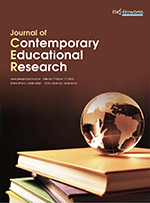Empowering Vocational Students to Excel in Skills Competitions: Challenges and Recommendations
Abstract
This paper analyzes key challenges faced by vocational college students when participating in national skills competitions. It identifies problems like limited resources, insufficient training, lack of mentorship, academic workload constraints, and inadequate equipment. Targeted solutions are proposed, including improving resource access, providing structured skill training, implementing expert mentorship programs, offering flexible schedules, and upgrading experimental equipment. Implementing these recommendations through a collaborative effort among stakeholders can significantly empower vocational students to excel in skills competitions by enabling access to resources, building practical skills, obtaining guidance, managing time effectively, and gaining hands-on experience.
References
Wang S, Peng F, Feng Z, 2023, The Role of Skills Competitions in Improving the Practical Ability of Vocational College Students. Journal of Contemporary Educational Research, 7(2): 23–28. http://doi.org/10.26689/jcer.v7i2.4708
Qi N, 2014, On the Training of the Computer Science Students’ Practical Ability in the Higher Vocational Colleges Based on the Professional Skills Competition. Journal of Shaoguan University, 2014(10): 95–98. https://doi.org/10.3969/j.issn.1007-5348.2014.10.022
Wang S, Peng F, Li M, 2022, Enhancing the Problem-Solving Skills of Vocational Students Through Skills Competition. Journal of Contemporary Educational Research, 6(12): 9–15. http://doi.org/10.26689/jcer.v6i12.4546
Wan L, 2022, Promote the Development of Higher Vocational Education with the Help of Vocational Skills Competition. The Road to Success, 2022(27): 25–28. https://doi.org/10.3969/j.issn.1008-3561.2022.27.009
Wang S, Wang X, Li M, 2023, Experimental Research on Introducing Skills Competition-Based Content into Classroom Teaching. Scientific and Social Research, 5(2): 1–8. http://doi.org/10.26689/ssr.v5i2.4707
Wang P, Wang Y, 2015, Study on the Role of Skills Competition to Enhance the Employability of Higher Vocational Students. Jiangsu Science & Technology Information, 2015(28): 52–53. https://doi.org/10.3969/j.issn.1004-7530.2015.28.022
Liu ZJ, Wan J, 2021, Review and Enlightenment of Lead Detection in Tea in the Guangdong Vocational College Skills Competition for Quality and Safety Test of Agricultural Products. Guangdong Chemical Industry, 48(14): 342–344. https://doi.org/10.3969/j.issn.1007-1865.2021.14.146
Wang S, Liang M, Feng Z, 2022, Proceedings of the 14th International Conference on Education Technology andComputers: The Application of Simulation in the Design of Skills Competition Entry in Vocational Colleges. ICETC, Barcelona, 170–174. https://doi.org/10.1145/3572549.3572577
Chen Z, 2022, Proceedings of the 2022 4th International Conference on Inventive Research in Computing Applications: The Evaluation Data Mining of the Comprehensive Practice Platform of Single-Chip Microcomputer in Vocational Colleges Based on the Intelligence of Skill Competition Assessment. ICIRCA, Coimbatore, 62–65. https://doi.org/10.1109/ICIRCA54612.2022.9985750
Li Y, 2020, Discussion on the Improvement of Teaching Method Based on the Competition of Spare Parts Mapping and CAD Mapping Technology in Secondary Vocational School. Modern Manufacturing Technology and Equipment, 2020(5): 222–224. https://doi.org/10.3969/j.issn.1673-5587.2020.05.104
Wang S, Peng F, Wang X, 2023, Proceedings of the 2023 14th International Conference on E-Education, E-Business, E-Management and E-Learning: Application of Simulation Technology in Vocational Education Skills Competition. IC4E, Shenzhen, 100–105. https://doi.org/10.1145/3588243.3588279
Wu L, Lin KF, Zhong JL, 2020, Index System Construction and Result Analysis of Effectiveness Evaluation of Teaching Methods of Metalworking Practical Training. China Educational Technology & Equipment, 2020(24): 149-152. https://doi.org/10.3969/j.issn.1671-489X.2020.24.149
Wan XC, Qi XB, 2020, Discussion on the Key Technologies of “Installation and Debugging of Modern Electrical Control System” in Skill Competition. Journal of Southern Vocational Education, 10(2): 87–94.

